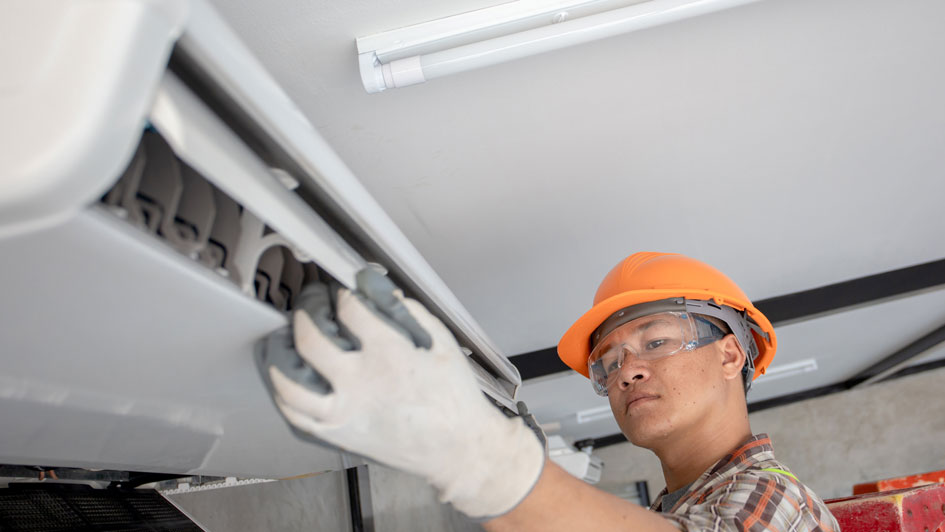
When shopping for a heating and cooling system for your dwelling, it’s critical to choose one that balances efficiency, performance and budget. That’s why many property owners explore the possibility of mini-splits to heat and cool their home.
Mini-splits—often called ductless mini-splits—offer many advantages that make them an appealing choice for both homes and businesses. They're highly energy efficient, lowering energy consumption and saving on utility bills, because they eliminate the energy losses associated with the ductwork found in traditional HVAC systems. They also permit users to tailor the temperature in each room, boosting overall comfort while saving energy.
If you’re contemplating mini-split installation in Hasbrouck Heights, it’s necessary to first find out if these devices are the right solution for your living situation. Here, we’ll explore how mini-splits compare to other heating and cooling systems.
What a Mini-Split Is and How It Works
A mini-split, or ductless mini-split, is a heating and cooling mechanism that does not use ductwork. It's often used in homes that don't have pre-existing air ducts and for homes with rooms that aren’t served well by the home's existing HVAC system.
A mini-split system has two major components: an outdoor compressor/condenser and an indoor air-handling component. The two are connected by a conduit containing the power cable, refrigerant tubing, suction tubing and a condensate drain.
Here's how it works: the exterior compressor distributes the refrigerant necessary for heat exchange within the coils and the air handler. The in-house unit draws in air from the room, cools or heats it over the coils and forces the conditioned air back into the room.
Mini-Split vs. Central Air
Mini-splits are good for targeted cooling in certain rooms or zones of your residence. They are outstanding for energy efficiency because they only condition the areas you desire. However, they sometimes don't blend seamlessly into every area due to their wall-mounted indoor units.
Conversely, a central air system uniformly conditions your entire home, producing consistent comfort levels throughout. Its ductwork is out of sight, preserving the appearance of your home. But it might not be as energy efficient as a mini-split, especially in larger homes or residences where certain rooms may not need continuous conditioning.
Mini-Split vs. Window AC/Window Unit
Mini-splits are usually more energy efficient and quieter than a window air conditioning unit and are useful for cooling air in multiple rooms. This is why mini-splits are a convenient alternative for lots of homeowners. They also operate using a type of refrigerant that is more eco-friendly, decreasing their environmental impact. These units can even add value to your home due to their reliable nature and superior cooling capabilities. However, they come with a greater up-front cost.
On the contrary, window air conditioning units are less expensive up front. They may be a good fit for homes that can't accommodate a central air system or for people with budget constraints. Despite these advantages, window units can consume up to 40% more energy than ductless mini-split systems and typically make more noise.
Mini-Split vs. Portable AC
The answer to what is better, a ductless mini-split or a portable air conditioning unit, is dependent on your priorities. If your main focus is energy efficiency and ability to quickly cool a room, a mini-split is heads and shoulders better than a portable AC unit. However, if funding is a significant concern, a portable AC costs less.
Mini-Split vs. Gas Furnace
Deciding between a mini-split system and a gas furnace depends on an assortment of factors which can include the climate in your city, home size, energy efficiency preferences and budget.
A mini-split system usually is more energy efficient than a gas furnace. It can heat and cool distinct areas inside of your home, supplying custom climate control in targeted rooms. Mini-splits also are for the most part quieter and have a greater up-front cost, but their operating costs are usually smaller due to their superior energy efficiency.
However, a gas furnace can be a very effective heating solution, particularly in colder climates where mini-split heat pumps may not be able to maintain comfort levels in the bitter cold. While they are less energy efficient than mini-splits, gas furnaces likely cost less. But, their operating costs can be higher, especially if natural gas prices rise.
Mini-Split vs. Heat Pump
Mini-splits and heat pumps operate using the principle of heat transfer. They are both energy efficient, but a heat pump's ductwork can use more power. That said, the choice between a mini-split and a heat pump often relies on individual needs and circumstances.
Case in point, if you are living in a warmer climate and primarily need cooling, a mini-split system might be a better choice. However, if you want both heating and cooling and already have ductwork in your home, a heat pump might be a more efficient option.
Mini-Split vs. Space Heater
When it comes to heating and cooling a home, mini-splits and space heaters each have advantages. However, for all around efficiency, versatility, comfort and safety, mini-splits outperform space heaters. Mini-splits provide superior energy efficiency simply because they deliver conditioned air right to different zones and can serve multiple rooms at once.
Space heaters are a great deal less expensive to buy but are typically recommended for heating a confined area or a single room. They also can be less energy efficient. As opposed to mini-splits, space heaters do not deliver cooling. The most significant drawback for space heaters is the danger of fire. Experts say some 1,700 fires per year involve space heaters.
